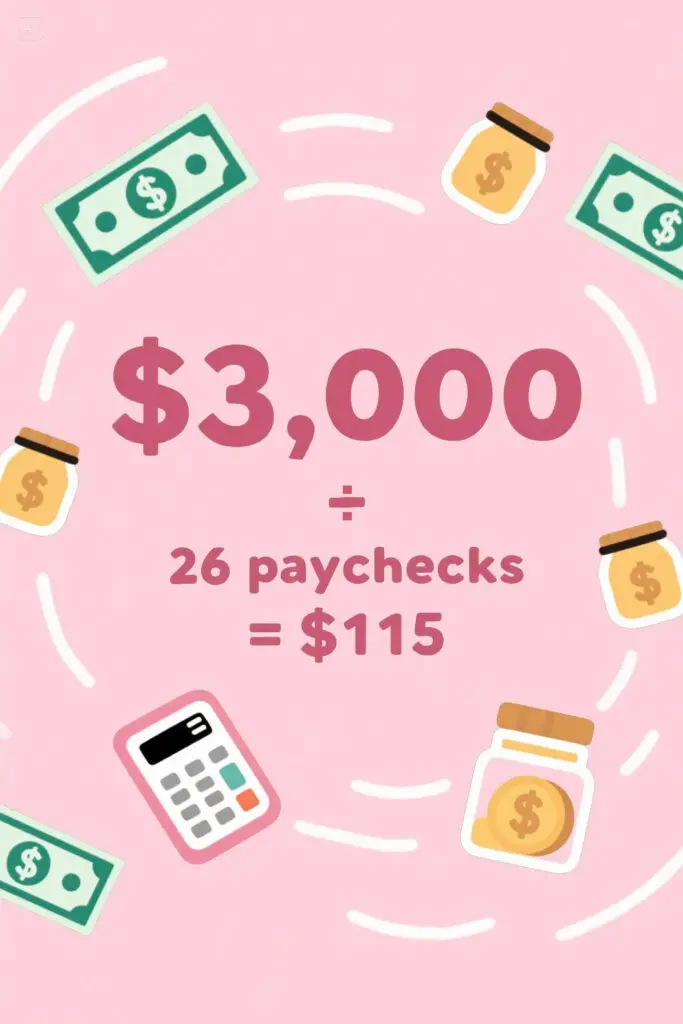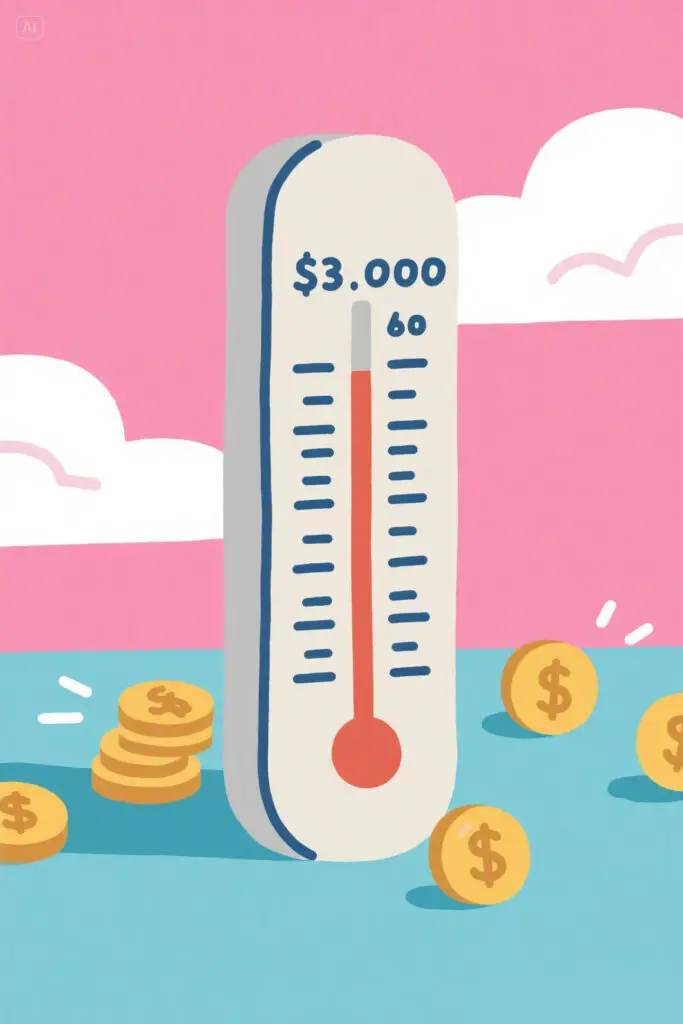Saving money is easier said than done when you’re dealing with pending bills, unexpected expenses, and family responsibilities that put your entire budget off track. However, the secret to building savings is in creating a plan that’s realistic, practical, and most importantly, manageable. Unlike strict monthly plans or too frequent weekly saving plans, biweekly plans work best for saving, and even better for those who get paid every two weeks, offering a plan that aligns with their pay schedule. This article will help you explore the dynamics of a biweekly savings plan, helping you save $3,000 in a year without feeling like you’re depriving yourself.
Understanding How the Bi-Weekly Savings Challenge Works
The biweekly savings plan is a structured plan designed to help you gradually build savings without having to feel overwhelmed and deprived. Unlike those irregular attempts at saving, this challenge uses the consistency of your pay cycle to your advantage.
This challenge involves setting aside small amounts more frequently rather than having to save a large amount each month, making this plan more manageable and less stressful. Over time, these small and regular contributions can add up to a significant sum, in this case, $3,000, without requiring big sacrifices.
Break Down the $3,000 Goal

Big financial targets can feel intimidating, but breaking them into smaller and more manageable chunks can make the challenge easier to follow. To save $3,000 in one year, you need to divide this number by 26 pay periods in a bi-weekly cycle, which comes out to about $115 per paycheck.
When you look at the smaller figure of $115, the challenge may seem easier instead of focusing on the intimidating $3,000 figure. For example, if you know you need $115 from each paycheck, you can adjust your spending on non-essentials, such as coffee runs, dining out, or entertainment to cover it.
Start Small and Increase Gradually
For many people, even $115 may seem like a huge amount, especially if you’re struggling with other financial responsibilities. Instead of sticking to a strict order of setting aside $115 every two weeks, you can begin with a smaller amount, such as $50 or $75, and increase the amount as your budget allows. For example, in the first three months, you might consistently save $75 per paycheck, and once you’ve built momentum and adjusted your spending habits, you can raise it to $100 or $115.
This approach works the best for people who are new to disciplined saving, as it builds confidence and reduces the risk of burnout.
Automate Your Savings
One of the most effective ways to succeed with the biweekly savings challenge is to automate the biweekly transfers. You can set up an automatic transfer from your checking account to your dedicated savings account. This method flips the script and allows you to prioritize saving.
What makes this strategy more considerable is that it takes away the stress of deliberately transferring money, helping you rely less on willpower and more on consistency. When the transfer happens automatically, saving becomes as routine as paying a bill, and you don’t have to constantly remind yourself to set money aside. It also removes the temptation to spend that amount on something else, since the money is gone before you can even touch it.
Use a Separate Savings Account
One of the most common reasons people fail to stick to a savings plan is that their money is too easily accessible. When savings sit in the same account as daily spending funds, it becomes tempting to use them for non-essentials, especially when expenses feel tight.
To avoid this, it’s best to use a separate savings account that is available to you but not easily accessible for you to use whenever the urge to spend arises. A better option would be to use a high-yield savings account where your money can earn interest while it just sits there, growing in peace without any drama or distraction.
Pair the Challenge with a Spending Audit
Saving money doesn’t always mean earning more, it often means making better use of what you already have. Pairing your bi-weekly challenge with a spending audit is a smart way to free up the funds you need. You can start by reviewing your past two or three months of expenses to identify areas where money is slipping away unnoticed which might include unused subscriptions, frequent dining out, online impulse purchases, or daily coffee runs.
Once you’ve identified these leaks, you can try to manage or eliminate them and redirect that money into your savings challenge. A spending audit not only helps you stay on track but also builds awareness about your financial habits, ensuring your money works for you instead of against you.
Use Cash Envelope Tricks
For those who struggle with overspending, the cash envelope can be a powerful strategy for the biweekly challenge. This strategy is all about allocating a fixed amount of cash to spending categories like rent, food, groceries, or transportation, and keeping that cash in separate envelopes with the category’s name written on them.
The catch of the cash envelope trick is to avoid overspending on a certain category and staying within the spending limit. What makes this trick more appealing is that it creates natural savings opportunities. For instance, if you have leftover cash in an envelope at the end of the two weeks, you can deposit it directly into your savings account as an extra contribution to your $3,000 goal.
Create Mini-Milestones
Saving $3,000 can feel like an intimidating commitment, and without motivation, it’s easy to quit midway through the challenge, which is why it is necessary to have mini-milestones. Breaking the challenge into smaller checkpoints makes it more manageable and rewarding. For example, aim to save $750 every three months or $1,500 by mid-year, and each time you reach one of these milestones, take a moment to acknowledge your success.
You can even create visual markers, such as filling in a progress chart or thermometer-style tracker as you save. Small celebrations at each milestone, like a budget-friendly family outing or a favorite home-cooked meal, make the journey feel less like a grind and more like an accomplishment. These mini victories remind you that even though the ultimate goal is $3,000, every step forward is a win worth celebrating.
Add Side Hustle Earnings
Sometimes, cutting expenses isn’t enough to hit your savings target comfortably, that’s why supplementing your income with side hustle earnings can make all the difference. Whether it’s freelancing, tutoring, babysitting, selling handmade crafts, or even decluttering and selling unused items online, every extra dollar adds up. For example, earning an additional $50 from a freelance gig and putting it into your bi-weekly savings means you’ll reach your $3,000 goal faster.
The best part is that side hustle income often feels like “extra” money, so setting it aside doesn’t affect your regular budget. Instead of spending it impulsively, dedicate those earnings entirely to the challenge, and over time, these small contributions can amount to hundreds of dollars.
Make it a Family Challenge
Saving money doesn’t have to be a solo effort, instead try turning the challenge into a family activity so that it becomes fun and easier to follow. If you have a spouse, partner, or kids who are old enough to understand the concept, get them involved and turn the savings challenge into a collaborative challenge.
Together, you can brainstorm small ways to cut costs, like cooking meals at home, choosing free entertainment, or reducing utility bills. Each family member can contribute in their own way, whether it’s skipping an unnecessary purchase or suggesting cost-saving ideas. You can also set family rewards for reaching milestones, like a special picnic or a game night.
Track Progress Visually

Humans are naturally motivated by progress they can see, which is why tracking your savings visually can be a powerful tool in this challenge. Create a simple savings tracker chart, thermometer graphic, or even use a jar where you deposit cash every two weeks.
Each time you add money, update your tracker so you can physically see how close you are to your $3,000 goal. This visual reminder keeps you accountable and motivated, especially on weeks when saving feels tough. By turning your progress into something visible and interactive, you transform the challenge from a financial task into a rewarding, motivational journey.
Reward Yourself Smartly
One of the best ways to stick with long-term goals is to reward yourself along the way, but the trick is to do it wisely. When you hit milestones in your $3,000 challenge, take a moment to celebrate your progress without undoing your hard work.
You can treat yourself to a cozy at-home spa day, cook your favorite meal, or plan a budget-friendly family activity. These small rewards give you something to look forward to and make the journey feel lighter. By rewarding yourself wisely, you build positive habits and keep your eyes on the bigger goal and when you reach the end, the best reward of all will be the $3,000 you’ve saved.
Conclusion
The bi-weekly savings challenge is one of the easiest and most practical ways to build a solid financial cushion without feeling stressed. It works because it fits into your pay schedule, breaks a big goal into smaller, manageable steps, and keeps you moving forward with simple strategies like automation, spending audits, and visual trackers. Along the way, little milestones and small rewards make the process exciting, while support from family or a little extra income can help you reach your goal even quicker. The best part is that this challenge doesn’t require extreme sacrifices, it’s all about steady, consistent action. By the end of the year, you won’t just have $3,000 in savings, you’ll also have stronger money habits that prepare you for bigger financial goals in the future.
